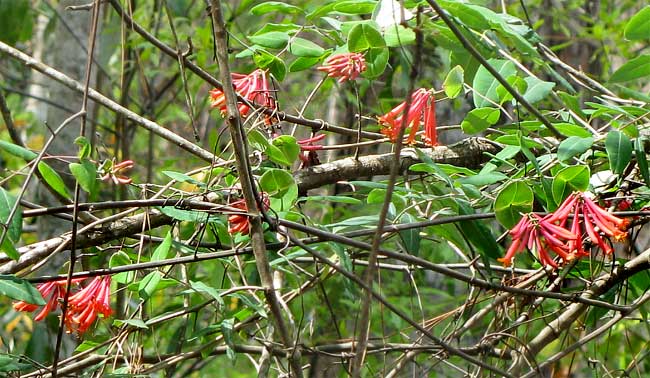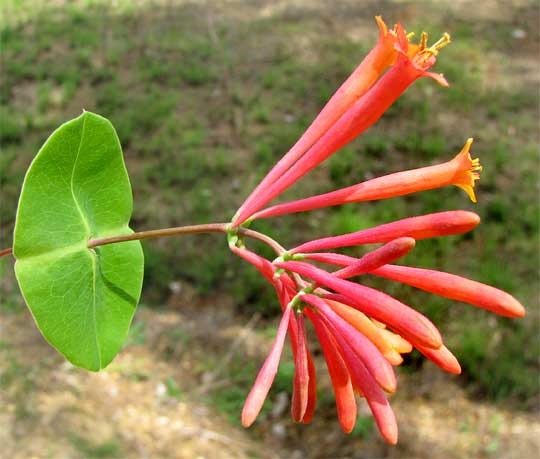Excerpts from Jim Conrad's
Naturalist Newsletter

from the the April 6, 2009 Newsletter, issued from the forest near Natchez, Mississippi; elevation ~400ft (120m), ~N31.47°, ~W91.29°:
RED HONEYSUCKLES FLOWERING
At woods edges one of the most striking presences nowadays is the Red, Trumpet or Coral Honeysuckle, LONICERA SEMPERVIRENS. Against the forest's deep green background the vine's dangling clusters of narrowly trumpet-shaped flowers, red outside and yellow within, is really something to see, as shown at the top of this page.
Above you can see an unusual feature of the Red Honeysuckle's leaves: While most of its leaves are simple and occur in pairs along the slender, twining stem, in this species, immediately below the flower cluster, the first pair of leaves are grown together, or "connate," into one blade through which the flower stem, or peduncle, passes right through the blade's center. When a stem seems to pass through a leaf like this, the leaf is said to be "perfoliate."
Also a bit unusual for the genus Lonicera, of which around 180 species are listed, mostly from China, is that the corollas of this species are more or less "radially symmetrical." Most honeysuckles, like the super-abundant invasive Japanese Honeysuckle, are bilaterally symmetrical, with four corolla lobes pointing upward and one below. Also, most honeysuckle species bear deciduous leaves, while our Red Honeysuckles are evergreen. In other words, our Red Honeysuckle is something of an unusual honeysucle species.
As you might guess, anything this pretty is threatened not only by the usual habitat destruction but also by people digging it up for planting around their own homes, where it almost invariably dies. People usually dig them when they're most pretty, which is early spring, exactly when the plant needs all its roots to support new growth, and of course digging them up destroys most of their root system. Red Honeysuckles used to be fairly common around here but now you only occasionally see them.
The species is native to most of eastern North America, and already is listed as endangered in Maine.